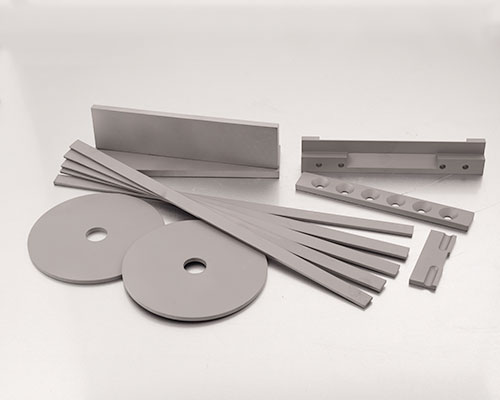The basic process of powder metallurgy process
1. Preparation of raw material powder. The existing milling methods can be roughly divided into two categories: mechanical method and physical chemical method. The mechanical method can be divided into: mechanical grinding and atomization method; Physical and chemical methods are divided into electrochemical corrosion method, reduction method, chemical method, reduction-chemical method, vapor deposition method, liquid deposition method and electrolysis method. Reduction method, atomization method and electrolysis method are the most widely used.
2, powder molding for the desired shape of the billet. The purpose of molding is to produce a certain shape and size of the compact, and make it have a certain density and strength. Forming methods are basically divided into pressure forming and non-pressure forming. Pressure molding is the most widely used molding. In addition, 3D printing technology can also be used for the production of embryonic blocks.
3. Sintering of billet. Sintering is a key process in powder metallurgy process. The final physical and mechanical properties of the pressed blank after forming are obtained by sintering. Sintering is divided into unit system sintering and multi system sintering. The sintering temperature is lower than the melting point of the metal and alloy used for solid phase sintering of unit system and multicomponent system. For liquid phase sintering of multicomponent system, the sintering temperature is generally lower than the melting point of refractory component, but higher than the melting point of fusible component. In addition to ordinary sintering, there are also loose sintering, melting, hot pressing and other special sintering processes.
4. Post-processing of products. After sintering treatment, according to the different requirements of the product, take a variety of ways. Such as finishing, dipping, machining, heat treatment and electroplating. In addition, in recent years, some new processes such as rolling and forging have been applied to the processing of powder metallurgy materials after sintering, and have achieved better results.

property of powder Property of powder
A general term for all properties of powder. It includes: the geometric properties of powder (particle size, specific surface, aperture and shape, etc.); Chemical properties of the powder (chemical composition, purity, oxygen content and acid insoluble matter, etc.); Mechanical properties of powders (loose density, fluidity, formability, compressibility, packing Angle and shear Angle, etc.); Physical properties and surface properties of powders (true density, gloss, absorptivity, surface activity, ta(%26ccedil;) Potential and magnetism, etc). The properties of powder metallurgy products often determine the properties to a large extent.
The most basic geometric properties are the size and shape of the powder.
(1) Granularity. It affects the forming process, the shrinkage during sintering and the final properties of the product. The properties of some powder metallurgy products are almost directly related to the particle size. For example, the filtration accuracy of the filter material can be obtained empirically by dividing the average particle size of the original powder particle by 10. The performance of cemented carbide products has a great relationship with the grain of wc phase. To obtain the cemented carbide with finer grain size, it is only possible to use finer grained wc raw materials. Powders used in production practices range in size from several hundred nanometers to several hundred microns. The smaller the particle size, the more active the surface, the easier it is to oxidize and absorb water. When the powder is as small as hundreds of nanometers, it is not easy to store and transport it. Moreover, when the quantum effect comes into play to a certain extent, its physical properties will change greatly. For example, the ferromagnetic powder will become superparamagnetic powder, and the melting point also decreases with the decrease of particle size.
(2) Particle shape of powder. It depends on the pulverizing method, such as electrolytic powder, the particles are dendritic; The iron powder particles obtained by reduction method are spongy. The gas atomization method is basically spherical powder. In addition, some powders are egg - shaped, disk - shaped, needle - shaped, onion - shaped. The shape of powder particles will affect the fluidity and loose density of powder. Because of the mechanical meshing between particles, the pressing strength of irregular powder is also high, especially the pressing strength of dendritic powder is high. But for porous materials, spherical powder is best.
Mechanical properties The mechanical properties of powder, namely the technological properties of powder, is an important technological parameter in powder metallurgy forming process. The bulk density of powder is the basis of volume method when pressing. The fluidity of powder determines the filling speed of powder and the production capacity of press. The compressibility of powder determines the difficulty of pressing process and the level of applied pressure. The formability of the powder determines the strength of the billet.
The chemical properties mainly depend on the chemical purity of raw materials and the pulverizing method. High oxygen content will reduce the pressing properties, the strength of billet and the mechanical properties of sintered products, so it is specified in most technical conditions of powder metallurgy. For example, the allowable oxygen content of the powder is 0.2% to 1.5%, which corresponds to the oxide content of 1% to 10%.